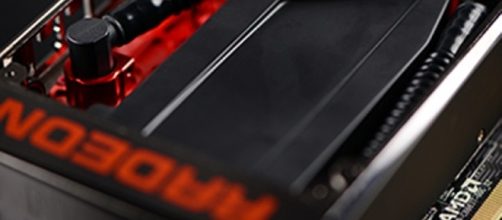With Nvidia fully dominating the high-end graphics card market, with their GTX Titan and the newly released GTX 1080 Ti, AMD has now released some brand new products to cement their place in the low to mid-end GPU market. Unfortunately, the company has not yet released its highly anticipated new Vega GPUs but instead is releasing an improved version of its Polaris-based Radeon RX line-up.
The same, but better and faster
As an upgrade to its AMD RX400 series of GPUs, AMD has now unveiled three new Graphics Cards, namely the RX580, the RX570, and the RX560.
The new GPUs will be replacing the RX480, the RX470, and the RX460, respectively.
AMD claims that they have implemented a new "third generation" 14nm FinFET manufacturing process for the new cards, which in partnership with Global Foundries. The new chips, called "Polaris Enhanced," also comes with tighter voltage and frequency regulations, which translates to better power efficiency and slightly higher clock speeds.
Cranked up clocks
Speaking of clock speeds, the base and boost clock of all three cards have been cranked up a bit compared to their RX400 predecessors. The RX560 now gets a 1,175 MHz base and 1,275 Mhz boost, higher than the 1,090 MHz and 1,200 MHz on the RX460. The same goes for the RX570, which now has 1,168 MHz base and 1,266MHz boost.
The RX580 also gets a bump with a 1,257 Mhz base and 1,340 Mhz boost.
Fully upgraded at the same price
Despite the various enhancements and improvements to what is basically still the same RX400 cards, AMD has kept the price the same across the board. The 2 GB RX560 is priced at just $99. Followed by the 4 GB RX570 at $169. Finally, the RX580 will be offered in two variants, namely a 4 GB version for $229 and an 8 GB version for $299.
Who are the cards for?
AMD is likely targeting AMD fans who have been waiting to upgrade their mid-end gaming systems but have not yet purchased any of the newer RX400 cards. The slight upgrade will likely push those buyers to finally purchase an AMD GPU seeing as that they will be getting more bang for their buck with the new products.
It has to be noted that the new cards do consume more power that their predecessors, let alone compared to their Nvidia counterparts. The added wattage also means that the cards do tend to generate more heat as well. Mid-end PC builders will probably need to take this into consideration when choosing between Nvidia and AMD for their particular setup.

